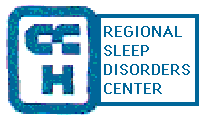Sleepwalking,
screaming, arousals with panic
and frantic, agitated behaviors.
THE SLEEP SITE
Understanding the symptoms of sleep disorders.
THE SLEEP SITE HAS BEEN REVISED AND UPDATED. CLICK HERE TO VISIT THE NEW SLEEP SITE! |
ABNORMAL
BEHAVIORS IN SLEEP. |
|||||||||||
What do they include? Such problems as screaming out, sleepwalking, abnormal body movements, tongue biting, night sweats, headaches, choking, shortness of breath, chest pains, abnormal heart rhythms, bedwetting, and sleep paralysis. Descriptions of these problems begin on page 3 of this self-care guide. What causes them? Both sleep disorders and a variety of other factors, including medical and neurological conditions and medications that affect sleep. IMPORTANT: ALL THESE ARE SYMPTOMS -- NOT DIAGNOSES! EACH ONE CAN RESULT FROM A NUMBER OF DISTINCT UNDERLYING CAUSES THAT REQUIRE ENTIRELY DIFFERENT TREATMENTS. So, it is important to clarify their specific cause in each person’s case, if they are to be brought under good control. How
can you help ensure their accurate diagnosis and effective treatment?
--By simple detective work--and, whenever possible, by asking others to observe carefully what happens to you while you sleep: particularly just before and during any abnormal events that you experience. ANALYZE YOUR PROBLEM IN EACH OF THE FOLLOWING ASPECTS: -1. During what stage of sleep do your problems seem to occur? Certain disorders occur specifically in rapid eye movement (REM) sleep, while others are particularly likely to happen in non-REM sleep. How might you be able to tell the difference? • Normal people spend the first 11/2 hours of sleep in progressively deeper stages of non-REM sleep (stage 1 or drowsiness, then stage 2, and then the deepest, soundest stages 3 and 4 which are called ‘slow wave sleep’). Most of our slow wave sleep occurs during the first few hours of sleep. • Next, after about 90 minutes of sleep, the first (and usually briefest) episode of REM sleep occurs, followed by more non-REM sleep, and then, another and longer period of REM sleep, and so on. Since REM episodes tend to lengthen as we continue to sleep, most of our REM sleep occurs during the last few hours of sleep. • In REM sleep, breathing patterns become irregular, rapid eye movements make eyelids flicker, and we experience our most vivid dreaming. Although we probably have dreams in other stages of sleep, they usually are hazier and more difficult to recall. Whether we recall dreaming depends on how quickly we awaken after REM sleep has occurred. Also, some people just don’t remember dreams well. Also, people will normally develop a limp paralysis during REM sleep to prevent them from being able to act out their dreams--but little body twitches and ‘shudders’ still occur. If you’ve watched a dog dreaming, it is easy to relate to these. Ask yourself (and those who’ve observed your sleep) the following questions: * When do the problems tend to occur?
* Are the following noted at the times the problems occur? (all of these favor REM sleep) _____ Irregular shallow breathing ______ Recall vivid dreaming _____ Eyelids flickering ______ Observers feel certain that I was dreaming _____
Wake up unable to move (sleep paralysis) -2. Exactly what do your abnormal sleep behaviors or events involve? Precise observations are a tremendous help in arriving at a correct diagnosis. Ask yourself and any observers the following questions. Then, write down anything that might help clarify your problem, if its cause is still unknown:
___ I’m lying on my back. ___ I’m snoring. ___ I’m having trouble breathing. (All these suggest that sleep apnea or other breathing problems could be causing the abnormal events.)
-3. What might have caused the onset of your problems?
-4. What might be aggravating your problem or making it happen more frequently?
|
|||||||||||
SUMMARY
OF ABNORMAL BEHAVIORS AND EVENTS: |
|||||||||||
|
IDIOPATHIC SOMNAMBULISM (sleepwalking, typically in a calm, non-agitated fashion): -Often
occurs in children--particularly boys. It usually but not always
resolves before adulthood. -Can also result from certain medications--such as certain sleeping pills (example: Ambien), sleep apnea and other conditions. -Sleepwalking
is not necessarily harmless! It can result in serious injury, particularly
if the individual walks outside. NIGHT TERRORS (sleep terrors, pavor nocturnus): -Commonest in children, especially boys. Usually outgrown but can persist into adulthood. - Can “run in families”. -Also occurs from slow wave sleep and thus, most frequent during first few hours of sleep. -Typical description: a child who sits up in bed and screams out frantically, confused and unable to recognize parents or family--even to the point of combativeness that can last 20 minutes or so. -Usually
no (or at most, hazy) dream recall. Patient usually doesn’t
remember having had these on the next morning. NIGHTMARES (Dream anxiety attacks) -Occur at any age. -Occur in REM sleep--so more likely to occur later during sleep. -Patient
usually can be awakened quickly and if awakened, typically can recall
the dream in vivid detail.
-Non-agitated sleepwalking in adults -- can result from sleep apnea, high fevers, and various medications (particularly “tranquilizers” and other “nerve pills”). -Agitated, frantic walking--or even running--in sleep, with high risk of self injury (broken bones, running out of second story windows and the like) -- can be due to:
IMPLICATIONS OF THE ABOVE ABNORMAL BEHAVIORS: • While infrequent, placid sleepwalking and typical night terrors in children will usually be “outgrown” without any need for specific treatment, serious injuries still are possible--and some patients have even walked outside in freezing weather. Thus, any possibility of self-injury obviously should be eliminated (for example, by blocking access to windows, doors and open stairwells, and by installing alarm systems). Treatment may be warranted in severe or persistent cases. • A formal sleep evaluation is warranted in all the other problems listed--particularly whenever a serious underlying cause or serious consequences appear possible. |
|||||||||||
THE SLEEP SITE NAVIGATOR MENU
INFORMATION ON SPECIFIC SLEEP DISORDERS |
INFORMATION
FOR PATIENTS, |
INFORMATION FOR OTHERS: AND FOR MORE INFORMATION:
|
||||||||||||||||||


COLUMBUS COMMUNITY HEALTH
REGIONAL SLEEP DISORDERS CENTER
Accredited by the American Academy
of Sleep Medicine.
Robert W. Clark, M.D., Medical Director
1430 South High Street, Columbus OH 43207
Tel: [614] 443-7800
Fax: [614] 443-6960
© Copyright 2006 Robert W. Clark M.D. Inc.